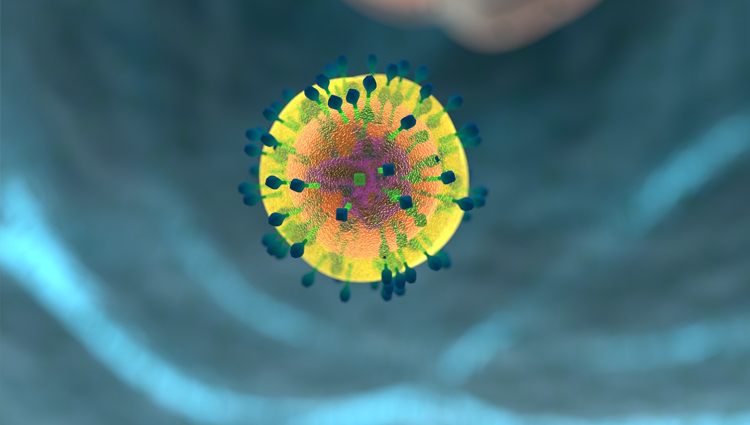Three Share Nobel Prize for Discoveries on the Body's Immune System

(ISNS) -- An American, a Canadian, and a Luxembourg-born biologist were awarded the 2011 Nobel Prize for physiology or medicine today for their work on the immune system, but one of the scientists -- unknown to the Nobel committee -- died just three days before today's announcement.
Ralph M. Steinman, most recently affiliated with Rockefeller University in New York, died Friday after a four-year battle against pancreatic cancer. Steinman's family said that his research may actually have helped to extend his own life, perhaps by several years, with a treatment he designed from his own discovery.
The Nobel Committee of the Karolinska Institute in Sweden issued a statement saying that the committee was unaware of Steinman's death before the prize recipients were announced, and that a similar situation has never before occurred. Following media speculation that Steinman would not actually receive the award, the Karolinska Institute assembly responsible for determining award winners released another statement confirming that Steinman would still be awarded the 2011 Nobel Prize in physiology or medicine.
Steinman, a native of Montreal, was given half the award for his research going back to 1973 which discovered cells for the adaptive immune system. The other half of the $1.5 million award was shared by American Bruce Beutler of the Scripps Research Institute in La Jolla, Calif., and Jules Hoffman, who last worked at the University of Strasbourg in France. They both researched the innate immune system.
"This year's Nobel laureates have revolutionized our understanding of the immune system by discovering key principles for its activation," stated the award panel in a press release announcing the prize.
Humans and other complex organisms have two immune systems, the workings of which are not entirely known. The first, the innate, is the most ancient and almost every living creature has it, according to Bali Pulendran, professor of pathology at Emory University School of Medicine’s Vaccine Clinic in Atlanta.
It works almost instantly, recognizing the nature of the invasion and even structures within the invading organism, and produces just the right kind of response to attack them, Pulendran said.
If something gets through that defensive line, the adaptive system, which is evolutionarily more recent, goes to work, producing T and B cells as well as antibodies, destroying infected cells.
The adaptive system, which only exists in some vertebrates and evolved more recently, perhaps a few hundred million years ago, remembers what invaded the body and provides long-lasting immunity.
Vaccines make use of both systems.
In 1996, Hoffmann, working with fruit flies, discovered a gene called the Toll gene which was required for triggering the innate system. If the Toll gene doesn't work, the system doesn't work.
Beutler found a receptor encoded by a gene like the Toll gene in mice that produced immunity to a bacteria species that could produce septic shock. That showed, among other things, that the system exists not only in insects but in mammals. The receptor he found turns on the innate system.
Steinman and his mentor, the late Zanvil Cohen, discovered cells they named dendritic, for their branching structure, that act as sentinels to the adaptive system. If the innate system is stimulated, the dendritic cells arouse the defensive cells. The dendritic cells, it turns out, are the bridge between the innate and the adaptive, the means of communication between the two.
Pulendran said the work of all three scientists made it possible to produce more effective vaccines and to do so more efficiently.
Stefanie Vogel, a microbiology and immunology professor at the University of Maryland School of Medicine in Baltimore, said the work of the three men helped make the study of the innate system far more important than it once was.
"Twenty years ago, the innate system would get maybe five minutes in lectures about the immune system," Vogel said.
When Steinman was diagnosed with pancreatic cancer, he designed his own treatment based on his research which kept him alive much longer than is usual for patients with this almost always deadly condition.
Pancreatic cancer patients often die within one year. Few live as long as Steinman did.
Pulendran said it was well known that Steinman had cancer, and besides being treated with dendritic cells, was undergoing chemotherapy and radiation treatment. He saw Steinman a few month ago and said he seemed to be doing relatively well.
Goran Hansson, secretary general of the Nobel committee for physiology or medicine at the Karolinska Institute, told the British newspaper The Guardian that when the committee failed to reach Steinman by telephone, they sent an email. Steinman's daughter got the message and contacted Rockefeller.
The daughter, Alexis Steinman, said her father did not know about the award when he died.
"We are all so touched that our father's many years of hard work are being recognized with a Nobel Prize. He devoted his life to his work and his family and he would be truly honored," she said in a statement.

